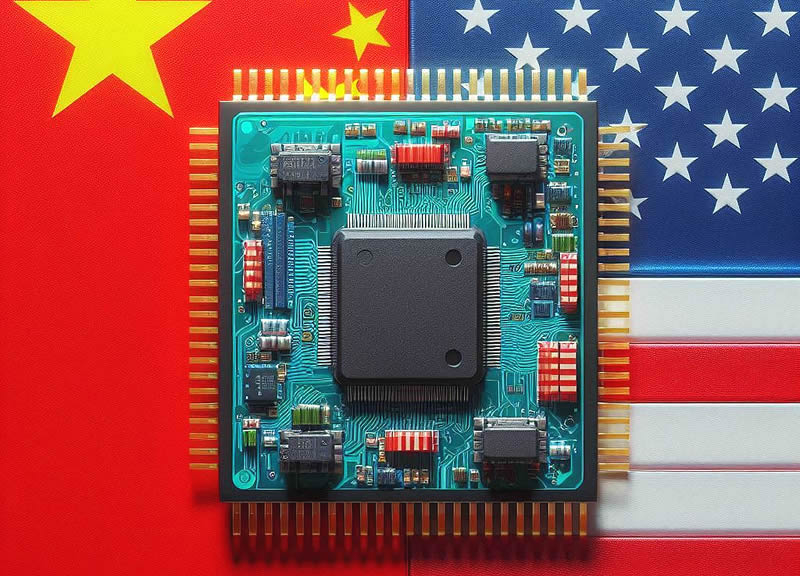China has announced a significant breakthrough in silicon photonics for semiconductor manufacturing. The JFS State Laboratory in Wuhan, a national center for photonics research, has successfully coupled a laser light source to a silicon chip for the first time. This achievement, according to Chinese media, could help the country overcome existing technical barriers in chip design and achieve self-sufficiency in the face of US sanctions.

Image source: Copilot
Founded in 2021 and supported by government support of 8.2 billion yuan ($1.2 billion), JFS is one of China’s key institutions developing advanced technologies. As JFS notes, the new technology uses optical signals instead of electrical signals to transmit data, which allows it to overcome the limitations of traditional chips associated with the physical limits of transmitting electrical signals and create faster and more powerful chips for processing big data, graphics and artificial intelligence.
It’s not just China that is showing interest in silicon photonics. Major players in the global semiconductor industry such as TSMC, Nvidia, Intel and Huawei are also investing heavily in the development of this technology. SEMI, the international semiconductor industry association, estimates that the global market for silicon photonic chips will reach $7.86 billion by 2030, up from $1.26 billion in 2022. TSMC Vice President Douglas Yu Chen-hua said last year that “a good silicon photonics integration system can solve critical energy efficiency and computing power issues in the AI era, leading to a paradigm shift in the industry.”
Note that silicon photonics is of particular value for China. Unlike traditional chips, photonic chips do not require high-tech extreme ultraviolet (EUV) lithography machines, which are subject to US export restrictions to China. “Silicon photonic chips can be produced domestically using relatively mature materials and equipment,” Sui Jun, president of Beijing semiconductor startup Sintone, said in 2022.
Experts believe that silicon photonics could become “a new front in the technological rivalry between the United States and China.” “While U.S. export controls are likely to constrain China’s ability to make traditional chips, it may also inadvertently encourage China to devote more resources to new technologies that will play an important role in the next generation of semiconductors,” wrote Matthew Reynolds. Reynolds, former fellow at the Center for Strategic and International Studies (CSIS).